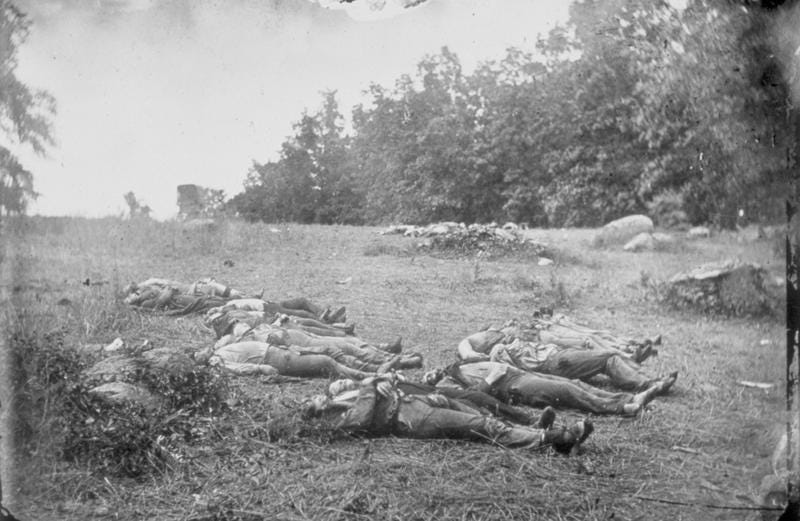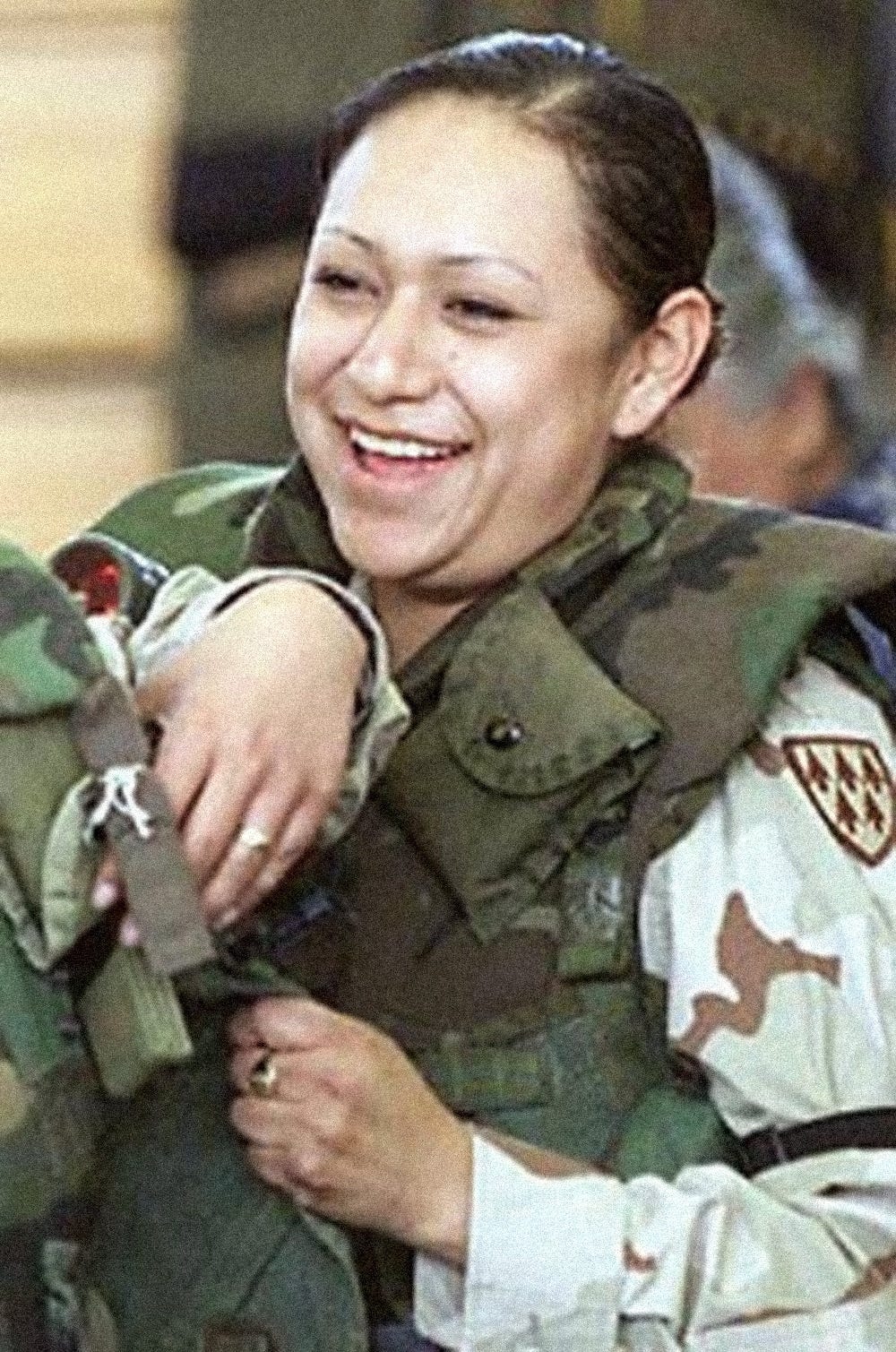To See, Or Not To See
The government controls what we see, and we have let them, which is foolish in the extreme. Because we are now met in a battle on our own soil, except it is not a war, it’s the slaughter of our children.

If the late great comic George Carlin were still on stage and ranting, he would continue to point out that America is a game, it’s rigged, and the only winners are the politically powerful and the wealthy. His was always a cynical take on a nation that has provided opportunity to untold people over the course of a few centuries and has changed the outcomes of history, often for the betterment of millions, even outside our borders.
But let’s be honest. Carlin was mostly right when it comes to truth and money, and the operators of the game only get better with the passage of time. By controlling the media, facts become minor impediments on the road to money and power. Every generation the manipulation becomes more refined, and taxpayers take on the role of a massive Greek chorus who have no influential role in the great tragedy unfolding before their eyes.
The modern levers of political management began in the Vietnam Era. The U.S. had not been involved in a war for more than a decade and the defense contractor profits from the Korean conflict were running low, along with their stock prices. Our new adventure in Southeast Asia involved mostly advisors and troops for training, but political pressure was increasing to expand American presence. A putative explanation was to stop the spread of Chinese communism in the post-war world. The president, JFK, had seen enough to know we were heading for a costly entanglement and issued NSAM 263, a National Security Action Memorandum, which ordered complete withdrawal of the U.S. military by the end of his first term.
This was a bad move for Kennedy. The C.I.A., Joint Chiefs of Staff, generals, defense contractors, and paranoid politicians wanted a war, another step in an American hegemony. Conveniently, the president was slaughtered in Dallas, LBJ of Texas became president, and our sons were soon off to a dirty little, but very profitable, war. LBJ’s financial and political consorts, Brown and Root, grew very rich building harbors, fire bases, airports and runways, barracks, office buildings, and roads, any infrastructure required by the military. The wallets of corporations like Sikorsky Helicopter also grew leaden with cash, and Dow Chemical made fortunes on napalm and agent orange, which is still killing U.S. veterans and the Vietnamese with cancer.
But the powers made one mistake. Journalists were allowed to cover the War in Vietnam while unencumbered by rules and guidelines. A reporter wanting to go into a jungle firefight had only to convince a chopper pilot there was room onboard his Huey, or the correspondent could just walk into the bush with a platoon on one of the endless “search and destroy” missions, conduct interviews, shoot film or photographs, and send it all back home to the states for publication or broadcast. The war entered our living rooms and the front pages of our hometown papers, and even though censors did not allow pictures of bodies, in most cases, images of body bags were inevitable, and that was some mother’s son dead and cold in that gray zippered sack. The public’s political will for the war was destroyed by the truth. The only end game in Vietnam was more war and death and destruction.
War ought to belong to the public. Families do the fighting and deal with the horrors on and off the battlefield. Americans’ first mass exposure to death and destruction was in the Civil War from the frightening early photographs of Matthew Brady and Alexander Gardner. Pastures covered with bloated bodies at Gettysburg and Fredericksburg and Shiloh and Manassas and Antietam, and all the other fields of fire are seared into our consciousness more than a century and a half later.
Publishers were more circumspect in the coming global wars. Visuals were not widely available of the mutilated and bullet-riddled youth that died in the trenches of Europe or later, on beaches in the Pacific. There were certainly visuals of the conflicts but not so much of the consequences. The dead were mostly anonymous until their bodies got home.

Maybe it’s possible military brass thought opening up the War in Vietnam to unrestrained news coverage would build political support for the effort. Instead, the opposite effect led to protests and the failures of two presidential administrations to find a convincing way to declare victory. The modern battle force that emerged years later with the initial invasion of Iraq was led by more media-sophisticated commanders. Reporters were no longer able to move about freely in troop operations. They applied to be “embedded” with various outfits as they crossed the Iraqi-Kuwait frontier. What American journalists saw, and mostly reported, was from the perspective of our soldiers. This worked frightfully well. The public was shown the U.S. rocket or artillery shell fired downrange but not the consequences of the explosion. Beyond a road littered with burned vehicles and glimpses of a few blackened bodies, there wasn’t much to fret over regarding chasing Saddam out of Kuwait.
By the time the second assault on Iraq was launched, the U.S. military was delivering marketing and branding and not just death. “Shock and Awe” turned war into a video game with colorful explosions in the night as CNN anchors narrated and generals held news conferences the next day to deliver explanations and play black and white videos of dark, running silhouettes being vaporized from the air. The enemy had been effectively dehumanized into a digital entity. They didn’t seem to really die because they didn’t appear to really be alive. Whether they were civilian, or combatant no longer was of great concern.
The coming home of our sons and daughters, killed in the invasion of Iraq, was equally scrubbed of horror. Lori Piestewa became the first Native American woman to die in combat in the U.S. military and the first woman to die in combat in Iraq. A mountain was given her name, but the Hopi people were kept mostly oblivious to how she died and what wounds killed her. Johnny Mata’s family knew he was caught in an ambush in Southern Iraq when his unit got lost, and that he was too mutilated for viewing by his wife and children, but the town came out to wave flags over his passing casket’s motorcade in the Chihuahua Desert of West Texas. He died in the same ambush as Piestewa.

Lori Piestewa
The fate of Jessica Lynch, though, got live national media coverage on network television. Lynch, who was taken prisoner by the Iraqis in the same attack that killed Piestewa and Mata, was later rescued, an operation that was broadcast across the country and timed for the morning shows. Military press offices generated a story that she fought to the end after her vehicle had been overturned, but Lynch said her weapon had jammed and the story was untrue. She accused the Army of making up a narrative and that the recording of her rescue was nothing more than public relations stunt to soften political opposition to the war. There was no resistance to U.S. troops as they took her out of an Iraqi hospital, where she later said she was given great care by doctors. The dead soldiers of color, meanwhile, went largely ignored. The living little blonde girl was marketed as a national heroine and became the subject of a bestselling book and a made for TV movie.

Jessica Lynch
They control what we see, and we have let them, which is foolish in the extreme. Because we are now met in a battle on our own soil, except it is not a war, it’s a slaughter. Children are being killed in their classrooms and all we hear about are heroic police officers, who, at least in the case of Uvalde, are not worthy of their badges. We see pictures of grieving parents, and flowers brought to the steps of the schoolhouse, and officers with weapons walking about as if they had done something important, flags are lowered, prayers are mourned, and the children are just as dead.
Our insensitivity is almost immeasurable. While parents were waiting around to provide DNA and get test results on whether their child had been slaughtered in a Uvalde school, their governor was already in East Texas getting checks from the NRA. When he found out the story that he had been told about the massacre was not true, he said he was “livid,” not about the killing of kids but about the fact that he was made to look bad with inaccurate information.
Ted Cruz, who runs to Mexico when times get tough, chose to heal this time by sending out a Tweet of himself having what he described as “ridiculous fun” playing poker. The video was shot a few months previously but Cruz chose to blast it out on the net as murdered children from his state were being laid in the ground. Of course, he had already been to Houston to speak to the NRA convention and explain how we needed to reduce the number of doors in schools, have more armed guards, armed teachers, and do anything other the improve gun safety protocols. Nothing ever shakes their consciousness that there is a great failure in a country that needs to fortify its public schools with guns.
I think it’s important to ask what right does Cruz, Abbott, U.S. Sen. John Cornyn, or any other politician have to turn away from the mutilated bodies of Texas children? At a minimum, shouldn’t politicians be required to walk among the prostrate dead, see their blood, smell the fear of their last moments, look at their shattered limbs and take a reading of who and what they might have become before they go back out the door and say gun laws are just fine and that unstable 18-year-olds ought to be able to buy AR-15s, no training, no license, no background check, no cooling off period?
These are horrors so disturbing politicians know that the public does not want to bear witness. One video pan of the classroom in Uvalde would create the political will to end the distribution and sale of semi and automatic weapons. What does the average American taxpayer know of the damage to soft flesh done by multiple bullets fired from such a gun? And should they learn of the destruction of humans in that manner? What if the parent of a child killed was exposed to the video of the destroyed body of their son or daughter? Is that agony worth the political resistance it might create to end easy access to weapons of mass slaughter and save other children? I cannot imagine such a horror for a grieving father or mother.
There are other strategies for ending this conflagration. We can require a 72-hour cooling-off period for anyone wanting to purchase a weapon. How about we ban assault weapons like the AR-15? Is there a real need for a long gun that can fire that many bullets with that much power? The question answers itself. Background checks also ought to be necessary. Computer systems need to bump databases to know who is mentally ill or has a criminal background. How hard can that be? Why in the hell haven’t we taken basic technological steps to get state and federal databases communicating?
We can protect the Second Amendment, or we can protect our children. None of our Constitutional rights are immutable. They need constraints, and most are already bounded by contemporary reality. Your freedom of speech does not allow you to enter a movie theater and yell “Fire” any more than it enables you to put a billboard up on a local highway accusing your former lover of being a thief. The same is true of your Second Amendment rights. To “keep and bear arms” doesn’t mean you can own short-range missiles or .50 caliber machine guns or tactical nuclear weapons. It also should not allow you to own AR-15s. The “well-regulated militia” is not well regulated.
We have not become irrational. We have always been without sound judgment regarding guns, as if they could protect us from our government. Even your AR-15s won’t stop Uncle Sam from wiping your homestead out with a drone or an M4 Sherman tank. Build up your stockpile and it will blow up just as quickly as your puny muscles. The argument that personal weapons will prevent an aggressive government from taking control of the land of the free is fatuous silliness. It has already happened and the slingers of guns and talking points are the ones making it happen.
Do not be afraid, though. The governor of Texas is empaneling a committee to take a hard look at his state’s problem with mass killings and high-powered weapons. Be assured that the smartest, most conservative Republican state senators and representatives will be gathered to decide what is causing the gun problem. We can stipulate from the outset it is simply not guns. Schools are too easy to enter. There aren’t enough police. Too many doors on schools. Mental health problems in a state where the governor just vetoed $211 million dollars in mental health funds. Bad parenting. A distance from God, whoever she is.
There are many, many causes of gun violence in Texas and America, but guns simply aren’t one of them.